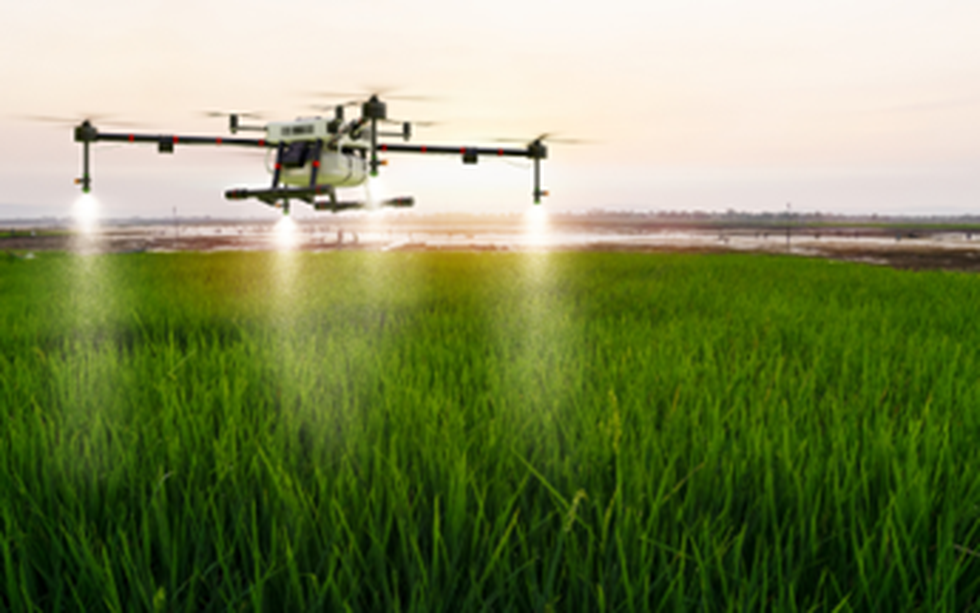
Why in the News?
- Under the Unmanned Aircraft System (UAS) Rules-2021, drones equipped with a Unique Identification Number (UIN) are permitted to operate in Indian airspace.
- By obtaining this certification, Marut Drones is now able to offer its agricultural drone technology to farmers across the country.
About AG 365S:
- It is a multi-utility agricultural drone in the small category (less than 25kg).
- It has been designed and developed by Marut Drones; an Indian drone technology company based in Hyderabad.
- Purpose: The made-in-India kisan drone – AG 365 has been developed particularly for agricultural purposes to reduce crop loss, lower agrochemical usage, and better yield and profits to the farmers.
- It is the first multi-utility agriculture small-category drone to receive the DGCA-approved type certificate in India.
- Features:
- The AG-365S drone has the highest endurance of 22 minutes.
- It is equipped with advanced obstacle and terrain sensors, which enables safe and smooth operations even in rough and patchy terrains.
- It is equipped with multiple payloads, and one AG-365S can be used for spraying pesticides, granular spreaders and also for running RPTO drone training academies.

About Urban Infrastructure Development Fund (UIDF):
- UIDF is established through the use of priority sector lending shortfall.
- Purpose: The Fund will be used by public agencies to create urban infrastructure in tier-2 and tier-3 cities.
- The focus will be on basic services like sewerage and Solid Waste Management, water supply and sanitation, construction and improvement of drains/storm water drains, etc., and impact-oriented projects will be prioritised.
- It is managed by the National Housing Bank.
- The initial corpus for this Fund is ₹10,000 crore.
- It is established on the lines of the Rural Infrastructure Development Fund (RIDF).
- States will be encouraged to leverage resources from the grants of the 15th Finance Commission, as well as existing schemes, to adopt appropriate user charges while accessing the UIDF.
- It currently covers 459 tier-2 cities and 580 tier-3 cities.
- UIDF Loans:
- The interest rate on UIDF loans has been kept at Bank Rate minus 1.5 per cent.
- The loan (Principal) will be repayable in five equal annual instalments within seven years from the date of the draw, including a moratorium period of two years.
- Interest will be payable on a quarterly basis.
What are tier-2 and tier-3 cities?
- The NHB, the nodal agency for the implementation of the UIDF, defines tier-2 cities as those with a population of 50,000 to less than a lakh and tier-3 cities as those between one lakh and less than a million as per the 2011 census.
Key Facts about Rural Infrastructure Development Fund (RIDF):
- The RIDF was set up by the Government in 1995-96 to finance ongoing rural Infrastructure projects.
- The Fund is maintained by the National Bank for Agriculture and Rural Development (NABARD).
- Contribution: Domestic commercial banks contribute to the Fund to the extent of their shortfall in stipulated priority sector lending to agriculture.
- Main Objective: To provide loans to State Governments and State-owned corporations to enable them to complete ongoing rural infrastructure projects.
- Repayment period: Loan to be repaid in equal annual instalments within seven years from the date of withdrawal, including a grace period of two years.
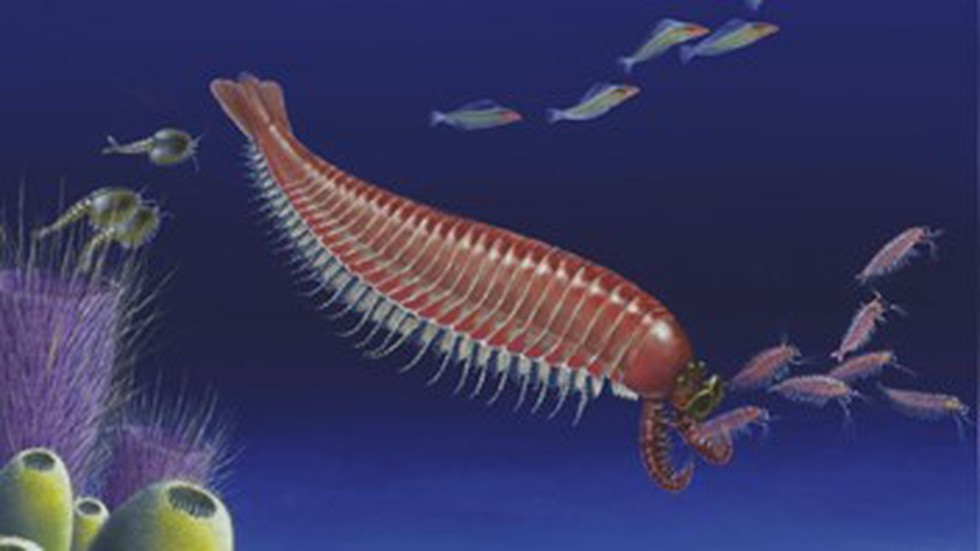
About Kylinxia zhangi:
- It is an extinct arthropod that lived in the early Cambrian period, about 520 million years ago.
- The fossil of the species was uncovered near the town of Chengjiang in the Yunan Province of southern China.
- Kylinxia is among the 250 or so extremely well-preserved fossil animals described from the region, which are together known as Cambrian Chengjiang biota.
- Features:
- It had a segmented body with a head, thorax, and abdomen.
- Kylinxia sported three eyes on its head, along with a pair of fearsome claws that was possibly used to catch prey.
- It had a fused head shield, a segmented trunk, and jointed legs.
- The creature had a head with six segments, which is similar to modern insects.
What are Arthropods?
- They are invertebrates with jointed legs.
- They make up about 75% of all animals on Earth.
- They can be found in almost every habitat on Earth, from deep-sea hydrothermal vents to the highest mountains.
- Arthropods are divided into four major groups:
- insects;
- myriapods (including centipedes and millipedes);
- arachnids (including spiders, mites and scorpions);
- crustaceans (including slaters, prawns and crabs).
- They are characterised by several key features:
- Exoskeleton: Arthropods have a hard exoskeleton made of chitin, a complex sugar. This exoskeleton serves as both protection and structural support for their bodies.
- Segmented Bodies: They have segmented bodies, which are divided into distinct regions, including the head, thorax, and abdomen in insects. This segmentation allows for flexibility and specialisation of body parts.
- Jointed Appendages: Arthropods have jointed appendages (legs, antennae, claws, etc.) that are attached to their body segments.
- Bilateral Symmetry: They exhibit bilateral symmetry, meaning their bodies are symmetrical on both sides when divided along a central axis.
- Open Circulatory System: Arthropods typically have an open circulatory system in which blood-like fluid called hemolymph circulates in body cavities and directly bathes the internal organs.

About Umiam Lake:
- Location:
- Umiam Lake, also known as Barapani Lake, is a lake in the state of Meghalaya 15 km (9.3 miles) north of Shillong, the capital of Meghalaya.
- It is encircled by lush green East Khasi hills.
- It is one of the biggest artificial lakes in Meghalaya, spread over an area of 10 square km,
- History:
- The lake was formed after a dam was constructed to generate hydroelectric power in 1965.
- The dam was a part of northeast India’s first hydel power project called the Umiam Umtru Hydroelectric Power Project.
- Source of Water: The confluence of the two streams, Umkhrah and Umshvrpi, form the Wah Ro-ro stream in the northwest of the town and joins River Umiam, the main source of water for the lake.
- The principal catchment area of the lake and dam is spread over 220 square km, which includes Shillong and its adjoining areas.
- It is a popular venue for water sports and adventure facilities.

About M S Swaminathan Award:
- It was instituted in 2004 with the objective to recognise the lifetime contributions of eminent persons who have made great impacts and outstanding contributions to agricultural research and development and to the overall food security and sustainability of agriculture, with special reference to India.
- It is named after the doyen of Indian Agriculture, Prof. M.S. Swaminathan, Chairman, M.S Swaminathan Research Foundation, Chennai.
- It is a biennial award constituted by the Retired Indian Council of Agricultural Research Employees Association (RICAREA) and Nuziveedu Seeds Limited (NSL).
- The award carries a Cash prize of Rs.2 lakhs (Rupees Two Lakhs only), a Medal, and a Citation.
- The award is open to all, irrespective of his/her nationality.
Who was M S Swaminathan?
- Mankombu Sambasivan Swaminathan, often referred to as Dr. M.S. Swaminathan, is a renowned Indian agricultural scientist and geneticist.
- Green Revolution in India:
- He is often referred to as the "Father of the Green Revolution in India."
- His research and work in crop breeding, particularly for wheat and rice, led to the development of high-yielding varieties that significantly increased agricultural productivity.
- This Green Revolution helped India overcome food shortages and played a crucial role in the country's agricultural transformation.
- In recognition of his outstanding contributions, he was awarded the first World Food Prize, the Ramon Magsaysay Award and many other national and international honours.

About National Carbon Registry:
- This software has recently been accredited as a digital public good (DPG).
- As a DPG, the registry uses open-source code, which allows countries to replicate and adapt the information to fit their own needs and contexts.
- The registry’s modules, software and technical documentation can be reused and tailored by countries, which could potentially reduce production costs and implementation timelines.
- The registry follows national and international best practices, which include UNDP, the World Bank, the United Nations Framework Convention on Climate Change (UNFCCC) and the European Bank for Reconstruction and Development (EBRD).
Key Facts about the United Nations Development Programme
- It is the United Nations' lead agency on international development.
- It works in 170 countries and territories to eradicate poverty and reduce inequality.
- It helps countries to develop policies, leadership skills, partnering abilities, and institutional capabilities and to build resilience to achieve the Sustainable Development Goals.
- Its work is concentrated in three focus areas: sustainable development, democratic governance and peacebuilding, and climate and disaster resilience.
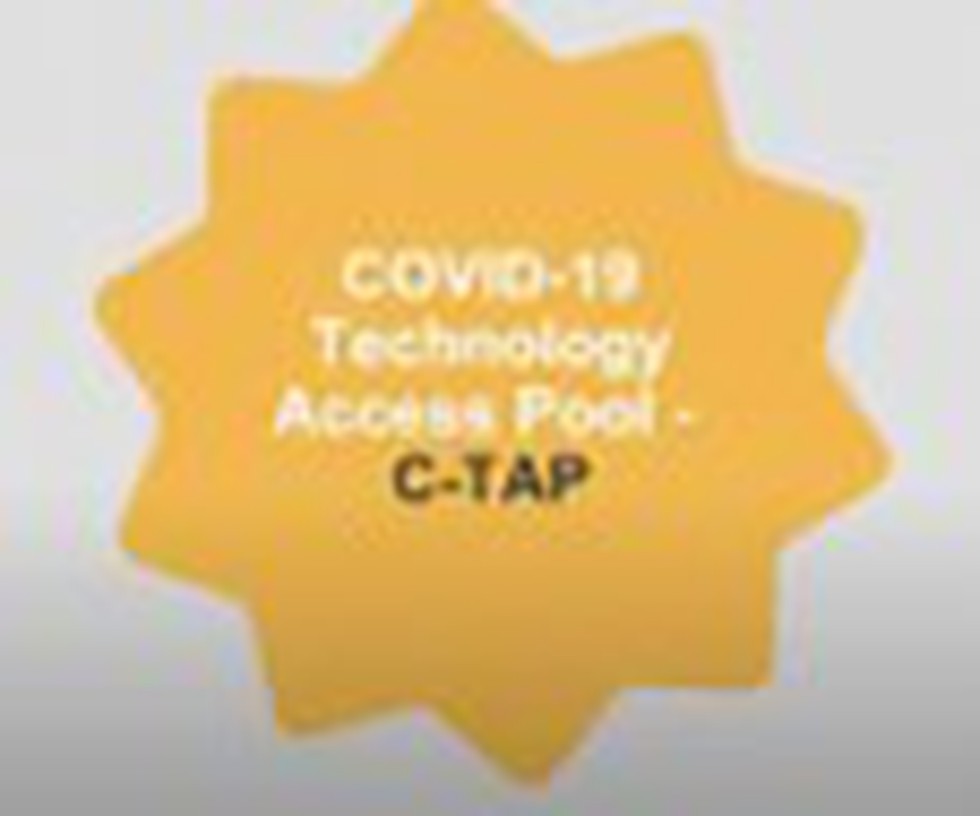
About C-TAP initiative:
- It was launched in May 2020 by the WHO and the Government of Costa Rica with the support of 44 Member States, UN Development Programme, Unitaid, UNAIDS, and implementing partners such as MPP.
- It works under the principles of the Solidarity call to action.
- It was designed to serve as a platform for developers of COVID-19 therapeutics, diagnostics, vaccines and other health products to voluntarily share their intellectual property, knowledge, and data to accelerate technological innovation and expand global production capacity.
What is the Medicines Patent Pool?
- It is a United Nations-backed public health organisation working to increase access to and facilitate the development of life-saving medicines for low- and middle-income countries.
- Through its innovative business model, MPP partners with civil society, governments, international organisations, industry, patient groups, and other stakeholders to prioritise and license needed medicines and pool intellectual property to encourage generic manufacture and the development of new formulations.
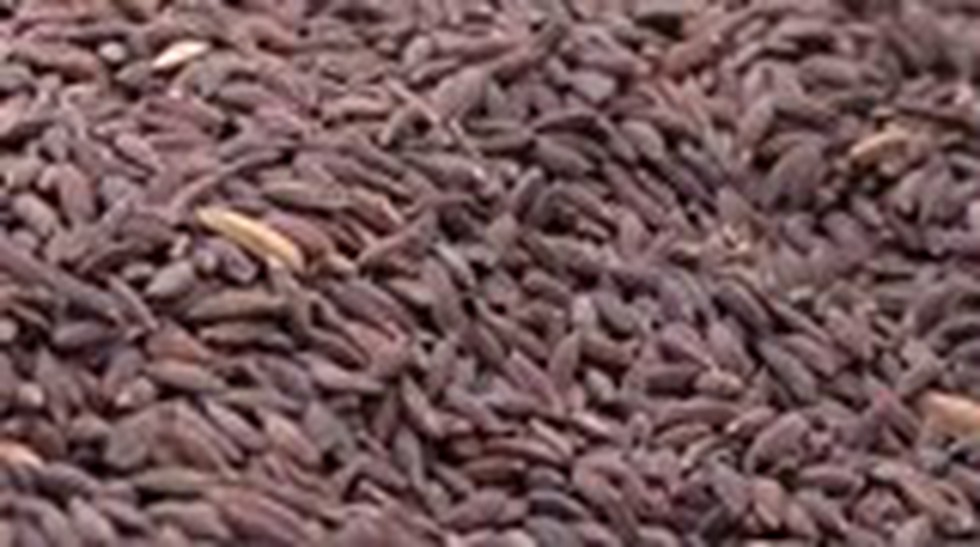
About Koraput Kalajeera Rice:
- The farmers of Koraput district in Odisha have domesticated Kalajeera rice over generations.
- It is known as the ‘Prince of Rice’ and is an aromatic variety of rice.
- The ancestors of the present tribal communities of Koraput district have domesticated the rice in the region for thousands of years, contributing to the conservation of the crop.
- It is popular among rice consumers for its black colour, good aroma, taste and texture.
- The ancient text explains that Kalajeera rice improves memory and controls diabetes.
- It is believed to increase haemoglobin levels and the body's metabolism.
- This fragrant grain has antispasmodic, stomachic, carminative, antibacterial, astringent and sedative properties.
- The rice is grown in Koraput district’s Tolla, Patraput, Pujariput, Baliguda and Mohuli areas.
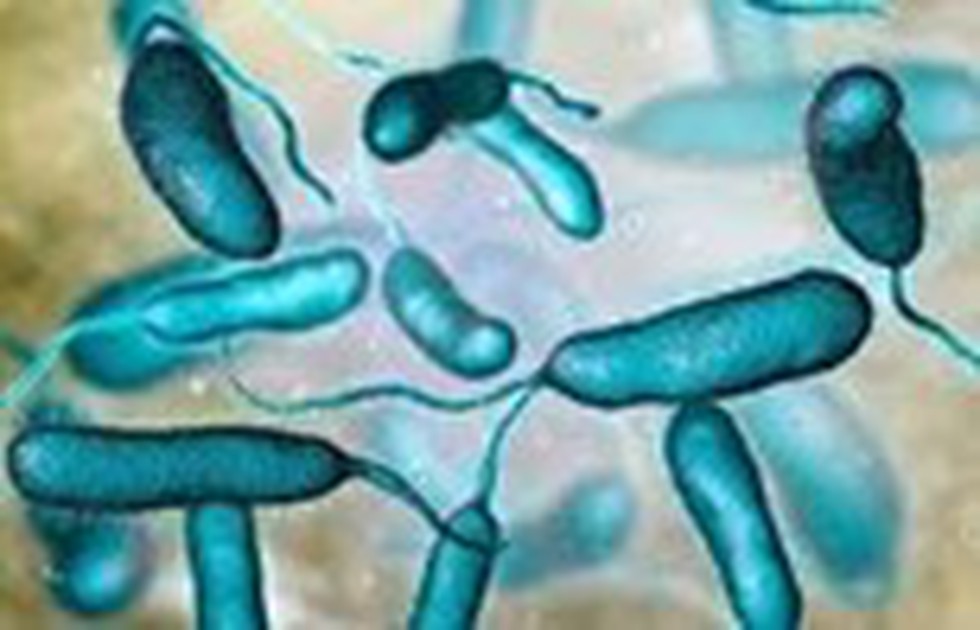
About Vibrio vulnificus
- It is a type of bacteria that can cause a fatal infection.
- This infection can happen when a wound comes into contact with raw or undercooked seafood, its juices, or its drippings or salt water.
- It eats away at the skin, muscles, nerves, fat and blood vessels around an infected wound.
- In severe cases, it can lead to septicemia, which is when the bacteria enter the bloodstream.
- It results in a septic shock, where blood pressure drops dangerously.
- Signs and symptoms include:
- Watery diarrhoea is often accompanied by stomach cramping, nausea, vomiting, and fever.
- For bloodstream infection: fever, chills, dangerously low blood pressure, and blistering skin lesions
- For wound infection: Fever, redness, pain, swelling, warmth, discolouration, and discharge (leaking fluids).
- The only method available to avoid getting infected with the bacteria is to avoid coming in contact with it.
- It is advised to make sure any seafood you consume is well-cooked, avoid raw or undercooked oysters and clean your hands after handling any kind of seafood.

About DIKSHA Platform:
- It is a national platform for school education, an initiative of the National Council for Education Research and Training (NCERT), Ministry of Education.
- It provides e-content for schools via an online portal and a mobile application.
- It was developed based on the core principles of open architecture, open access, open licensing, choice and autonomy.
- It is built on open-source technology that is made in India and for India, incorporating internet-scale technologies and allowing for a variety of use cases and solutions for teaching and learning.
- Features
- The core building blocks of DIKSHA comprise majority of National Digital Education Architecture (NDEAR) building blocks, having enabled some successful use-cases of NDEAR such as energised textbooks, online courses, content authoring, content sourcing, interactive quizzes, question banks, chatbot, analytics and dashboard.
- To aid teaching and learning for Children With Special Needs (CWSN), a large number of audiobooks, ISL (Indian Sign Language) Videos, and a Dictionary have been made available on DIKSHA for CWSN.
Key facts about National e-Governance Division
- It was created by the Ministry of Electronics & Information Technology as an Independent Business Division under the Digital India Corporation.
- Since 2009, NeGD has been playing a pivotal role in supporting MeitY in Programme Management and implementation of the e-Governance Projects, providing technical and advisory support to Ministries/ Departments, both at Central and State levels, along with other Government organisations.
- It has developed and is managing several National Public Digital Platforms such as DigiLocker, UMANG, Rapid Assessment System, OpenForge, API Setu, Poshan Tracker, Academic Bank of Credits, etc.



.jpg)
.jpg)
























































































































































.png)
.png)
.png)
.png)
.png)


.png)
.png)
.png)





.png)
.png)






.png)
.png)
.png)
.png)
.png)
.png)
.png)
.png)
.png)

.png)







.png)
.png)


.png)
.png)
.png)


.png)

.png)
.png)





.jpg)

.png)
.png)


.png)

.png)
.png)
.png)



.png)

.png)
.png)
.png)
.png)
.png)
.png)
.png)
.png)
.png)
.png)




.png)

.png)





.png)
.png)
.png)
.png)
.png)
.png)
.png)
.png)
.png)
.png)
.jpg)
.jpg)

.png)
.png)
.png)
.png)
.png)
.png)
.png)
.png)
.png)
.png)
.png)
.png)
.png)
.png)
.png)
.png)
.png)
.png)
.png)
.png)
.png)
.png)



.png)
.png)

.jpg)
.jpg)


.jpg)
.jpg)
.jpg)
.jpg)
.jpg)

.jpg)








.jpg)
.jpg)
.jpg)
.jpg)
.jpg)

















.jpg)
.jpg)







.jpg)


















.jpg)
.jpg)






























































































.jpg)
.jpg)


























.jpg)

.jpg)










.jpg)








.jpg)




.jpg)










.jpg)


















.jpg)












































.jpg)














.jpg)
.jpg)
.jpg)





.jpg)

.jpg)
.jpg)





































































.jpg)


































.jpg)
.jpg)
















































.jpg)












.jpg)


.jpg)




.jpg)
.jpg)
.jpg)

.jpg)
.jpg)
.jpg)
.jpg)

.jpg)
.jpg)
.jpg)

.jpg)
.jpg)
.jpg)
.jpg)
.jpg)
.jpg)
.jpg)
.jpg)

.jpg)


.jpg)
.jpg)
.jpg)
.jpg)
.jpg)
.jpg)
.jpg)
.jpg)
.jpg)
.jpg)











.jpg)
.jpg)





.jpg)
.jpg)
.jpg)
























.jpg)
























.jpg)









.jpg)
.jpg)







.jpg)
.jpg)









































.jpg)
.jpg)
.jpg)
.jpg)
.jpg)

.jpg)
.jpg)
.jpg)
.jpg)
.jpg)


.jpg)
.jpg)
.jpg)
.jpg)
.jpg)

.jpg)
.jpg)
.jpg)
.jpg)
.jpg)
.jpg)
.jpg)
.jpg)
.jpg)
.jpg)
.png)

.png)
.png)

.png)
.png)
.png)
.png)


.jpg)
.jpg)

.jpg)
.jpg)
.jpg)

.png)
.png)
.png)
.png)
.png)
.png)
.png)

.png)
.png)
.png)
.png)
.png)
.png)
.png)
.png)
.png)
.png)





































































-min.png)



.png)




.png)








































